Ready to Rock: Why I quit my day job, left Manhattan, and moved back to the Valley to play music full time
| Published: 03-29-2018 3:14 PM |
April 22, 2017, 13th Floor Music Lounge, Florence. Three bands are on the bill: two punk outfits and Flathead Rodeo, a rockabilly band playing in public for the first time. Pairing those styles isn’t as strange as you might think; rockabilly, which originated in the 1950s with Elvis, Johnny Cash, Jerry Lee Lewis and others, was the punk of its day. It looked and sounded like it beamed down from some leering, sneering, pompadoured planet, hellbent on pushing around Perry Como, Patti Page and their ilk who ruled the charts. They whipped hillbilly music, rhythm and blues, blues, country and western and jazz into a musical cocktail shaker and poured out a potent concoction that would become rock ’n’ roll.
There was no telling how Flathead Rodeo would go over with that crowd or any other. Although rockabilly was extremely influential, it originally existed for only a few years, from 1954 to 1957 or so before Elvis turned into a movie star and teens found other types of music to swoon over. It remains an outlier, a musical leap of faith these days unlikely to receive widespread attention.
But that’s not the only leap of faith here. As a member of the band, I had made a life-changing leap to be at the 13th Floor that night by moving from Manhattan back to the Valley music scene that I had abandoned 35 years before. With the door to my New York life effectively closed, this notion would have to work, or well … I didn’t really know.
...
I arrived as a first-year student at Hampshire College in 1975 to study literature and writing. A bass player at the time, I starting played Top 40 songs in clubs around my hometown of St. James, New York while still in high school. Under the influence of Miles Davis and John Coltrane, I jammed with other like-minded students once I got Hampshire.
There were certainly exceptions, but with a lot of slick, indulgent and over-produced bands dominating the FM airwaves, I didn’t find rock ’n’ roll satisfying; the music seemed to have lost its way. But things began to change around 1976 when punk hit with bands like The Ramones, Blondie, and from England, The Sex Pistols and The Clash. Suddenly, the music returned to its primitive essentials. There was a strong family resemblance to rockabilly, musically and stylistically, particularly with bands like The Cramps and the Stray Cats.
Interest in punk and new wave spread through the Five Colleges like Creeping Charlie via college radio stations, concert programs, and vinyl purchased at local record stores. Area bands including such the Elevators (signed to major league Arista Records) and the edgy Scientific Americans were among those playing to crowds at now-legendary clubs like the Blue Wall at UMass, Rahar’s in Northampton and the Rusty Nail in Sunderland. The Nail was a club that featured top acts from the here and afar, a stopover for bands playing between New York and Boston.
Article continues after...
Yesterday's Most Read Articles
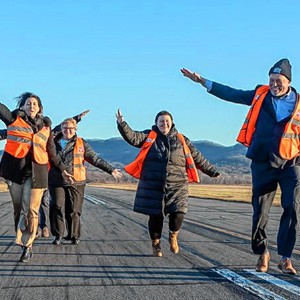 Treehouse, Big Brothers Big Sisters turn race schedule snafu into positive
Treehouse, Big Brothers Big Sisters turn race schedule snafu into positive
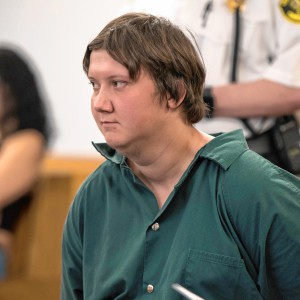 Northampton man will go to trial on first-degree murder charge after plea agreement talks break down
Northampton man will go to trial on first-degree murder charge after plea agreement talks break down
 Area property deed transfers, April 25
Area property deed transfers, April 25
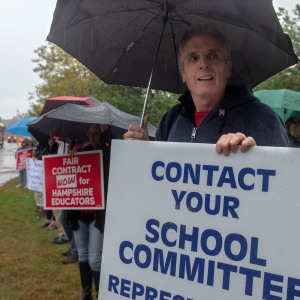 Contentious dispute ends as Hampshire Regional schools, union settle on contract
Contentious dispute ends as Hampshire Regional schools, union settle on contract
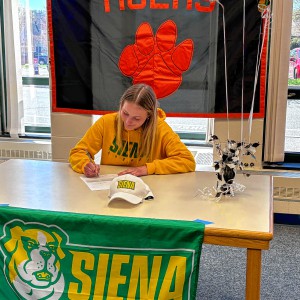 South Hadley’s Lauren Marjanski signs National Letter of Intent to play soccer at Siena College
South Hadley’s Lauren Marjanski signs National Letter of Intent to play soccer at Siena College
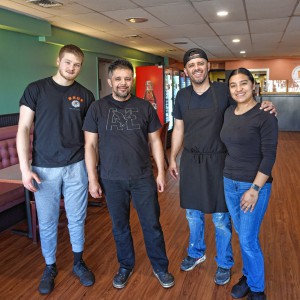 Primo Restaurant & Pizzeria in South Deerfield under new ownership
Primo Restaurant & Pizzeria in South Deerfield under new ownership
Bassist Lisa Paparazzo (my then-girlfriend, now my wife), guitarist Jon Steele and I formed Paper Dolls at Hampshire in 1978 after starting Mimi and the Dregs, the area’s first punk band. Lisa was always fond of saying, “A lot of girls wanted to date Dee Dee Ramone, but I wanted to play like him,” and so she did.
During the late 1970s and early 1980s, punk evolved into new wave, including performers such as The Cars, Blondie, the B-52s and Elvis Costello. The music was more melodic and broadly appealing than punk, which suited our pop side. With its jangly Rickenbacker guitars, harmonies, and Beatle boots, Paper Dolls was greatly influenced by the mid-1960s British Invasion but with a harder, contemporary edge.
...
After graduation, Lisa and I played in local clubs like the Rusty Nail, where we opened for the Buzzcocks and 999, helping to develop and drive the local music scene. We also branched out to Boston, with appearances at The Channel (opening for John Cale) and the infamous Rat in Kenmore Square, as well as venues in New Haven and other cities.
In 1981, our band was offered a record contract with San Francisco’s Bomp! Records, then one of the country’s top independent labels. Bomp! acts included Devo, The Romantics, The Stooges, and The Modern Lovers. Getting signed with that label was considered a stepping stone to a major recording contract, but we couldn’t reach an agreement with Bomp! on the material for the record, and we decided not only to turn the contract down, but to end our rock ’n’ roll careers.
At 25, we felt old (yes, I know) and burned out from a demanding playing schedule. We also felt we would need to face the inevitable: It was time to find more stable and less risky ways to earn a living that we could do for a long time as adults (the really grown-up kind).
Lisa and I sold most of our music equipment to finance a few months of backpacking through Europe, before settling in New York City to pursue publishing careers. Lisa concentrated in American studies and children’s literature at Hampshire; she would go on to work in the children’s books divisions of Viking Penguin, Houghton Mifflin and Putnam. In addition to studying literature and playwriting at Hampshire, I was the co-editor of the college newspaper, and I started my journalism career path right here as an arts and entertainment writer for the Daily Hampshire Gazette.
...
Once in New York, my first publishing job was as an editorial assistant at World Tennis magazine, which allowed me to edit and write about the game that I loved. It was a great time for magazines and tennis with players like John McEnroe, Bjorn Borg, Chris Evert and Martina Navratilova ruling the rankings. From there, my 30-plus years in New York publishing included stints as editor in chief of Men’s Fitness magazine, assistant managing editor of Time Inc.’s custom publishing division, editor of Bicycling magazine and executive editor of Budget Travel magazine. My writing, on a range of subjects, appeared in The New York Times, The New Yorker, Esquire, Sports Illustrated and other publications.
I enjoyed a long publishing career, moving from newspapers to magazines to digital media. And yet, over the years, I began to feel that something was missing. There’s a saying that as you were in high school, so you’ll be in life. That can be interpreted many ways, but for me, it meant it was time to come clean with myself and admit it: I was a musician. After taking decades off from serious playing, I decided to get back into it. I wanted something challenging, something I hadn’t done before. I’d always loved the guitar-dominated sound of rockabilly bands, even though I first consciously heard it via the early Beatles albums, so I decided to focus on that style.
In 2014, I decided to spend a year getting my chops where they needed to go before playing out. I wanted to be able to play as if I hadn’t taken decades off, which I was able to do through countless hours of researching the genre and practicing. And I loved it. It certainly wasn’t lucrative, but the money meant much less to me at that point in my life than finally doing what I really – really – wanted to do. My last corporate-type job in New York was chief of content and creative/general manager of marketing and communications at Pace University. I worked there from 2013 through 2016, but by the end, I couldn’t pretend I wanted to be there any longer. I was having too much fun in the clubs.
Lisa and I had spoken about returning to the Valley. With her interest in American studies dating back to college, she wanted to start a historic tour company. And based on the recent career shift, and the fact that the Valley has always been music-friendly, we decided that now was a good time to go while we still had a lot of active years left. I spoke to a financial consultant who helped us determine how to make it work.
With our move imminent, I ran an ad on Craigslist in western Massachusetts to recruit musicians for the project. We also started to market our home on Manhattan’s Upper East Side, which sold quickly. I gave notice at my job on June 7, 2016; the very next day I took the Peter Pan bus from Port Authority to Northampton to check out some neighborhoods. Before long, I came upon a home in North Amherst that was perfect and made an offer.
Normally, I wouldn’t go to the supermarket to buy a loaf of bread without getting Lisa’s input. You can imagine our phone conversation at the end the day when she asked me how thing were going. “Well,” I replied, “I think I bought a house.” I’m more methodical than spontaneous, but when something’s right, something’s right. I walked around the property and took a cell-phone video to show Lisa when I returned to New York. Fortunately, she liked the video.
Better still, the next week when she came up to see the 100-plus-year-old house set amid the woods — the sound of the Cushman Brook replacing that of Second Avenue subway construction — she agreed that this was the indeed the place.
...
Returning to the Valley to live and play music after a 35-year hiatus has been like an episode of “The Twilight Zone.” Some observations:
—The area is still extremely supportive of local music with a lot of places to play.
—A lot of people do venture out to hear it, particularly original music. Being musically open-minded is still a point of Valley pride, as always.
—We know many of the people in and out of the music community that are still here. They’re often grayer and perhaps carrying an extra pound or two around, but it’s been a joy to reconnect.
—The local press and radio continue to take homegrown music very seriously — and to support it.
—Clubs such as Rahar’s, the Rusty Nail and the Blue Wall are long gone and missed by those who remember them. But the local brewery explosion has helped to drown the sorrow.
...
Some musicians are happy to just make music and not play out at all. Flathead Rodeo loves to play, but it also loves to perform. The band — me on guitar and lap steel guitar; Theo Aronson on stand-up bass; Miriam Sirota, vocals; Billy Klock, drums — plays out in the Valley, and beyond, two or three times a month. The key to the band’s success has been an accessible sound and its energetic live performance that can’t be experienced while listening to music on an iPhone. As a result, things have happened fast — being accepted by audiences, making friends, and having them return as fans.
About that name … the flathead was a type of Ford engine design often used in 1950s hot rods. Rodeo, well, you know what that is. The name lets people know there’s a strong ’50s element to the band, and a lot of country, too.
Most of the band work is done behind the scenes and includes rehearsing, songwriting (the band performs original compositions as well as music by other artists), bookings, social-media management, marketing, press relations, promotion and the selling of merchandise (T-shirts, stickers and buttons).
If it sounds like the running of a small business, it is, except the payout is mostly in the form of doing something I truly enjoy (finally). And despite the amount of work it takes — it’s more than a full-time job, and it never sleeps — I can honestly say it’s the best job I’ve ever had.
My good friend David Sokol, a kid around my age, and I often get together to see or discuss music. I’ve known David, who was a longtime music editor of the Valley Advocate, from our time in the Paper Dolls. Currently, along with his son, Michael, he is one half of Sokol Heroes, a radio program dedicated to past and current Valley music on 93.9 The River.
David and I both believe, as do many of our other musician friends, that we’re beyond fortunate to be here doing what we’re doing with others we want to do it with, some of whom we’ve known forever and some of whom we’ve only just met. We have a saying for it: These are the best of times.

 Speaking of Nature: ‘Those sound like chickens’: Wood frogs and spring peepers are back — and loud as ever
Speaking of Nature: ‘Those sound like chickens’: Wood frogs and spring peepers are back — and loud as ever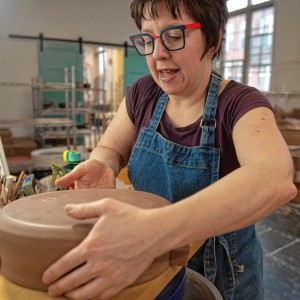 Hitting the ceramic circuit: Asparagus Valley Pottery Trail turns 20 years old, April 27-28
Hitting the ceramic circuit: Asparagus Valley Pottery Trail turns 20 years old, April 27-28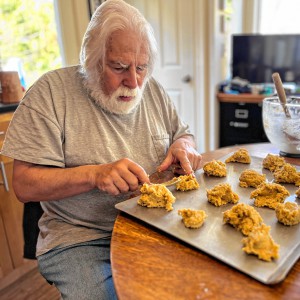 Best Bites: A familiar feast: The Passover Seder traditions and tastes my family holds dear
Best Bites: A familiar feast: The Passover Seder traditions and tastes my family holds dear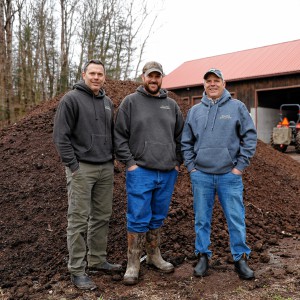 Valley Bounty: Your soil will thank you: As garden season gets underway, Whately farm provides ‘black gold’ to many
Valley Bounty: Your soil will thank you: As garden season gets underway, Whately farm provides ‘black gold’ to many
